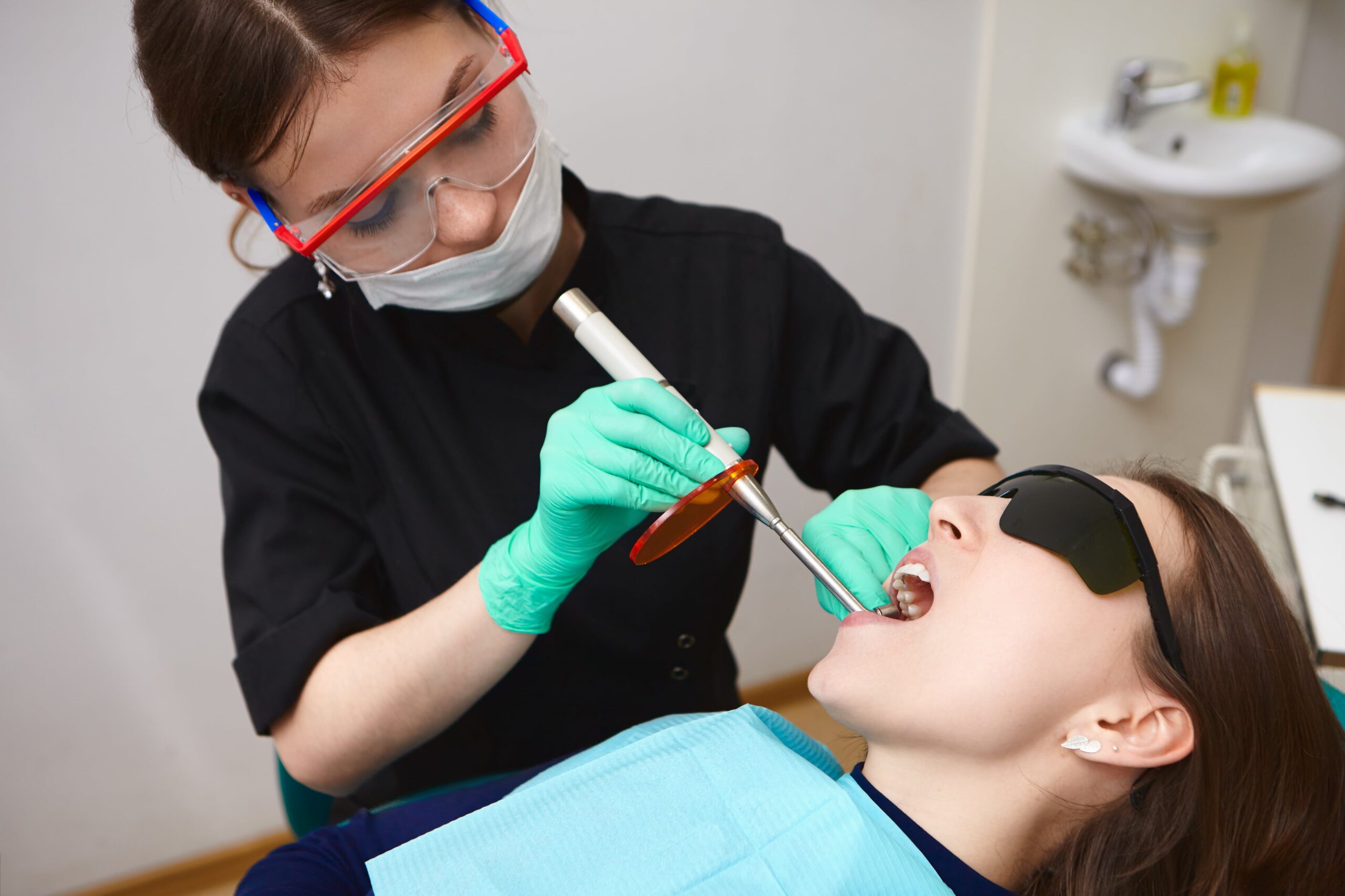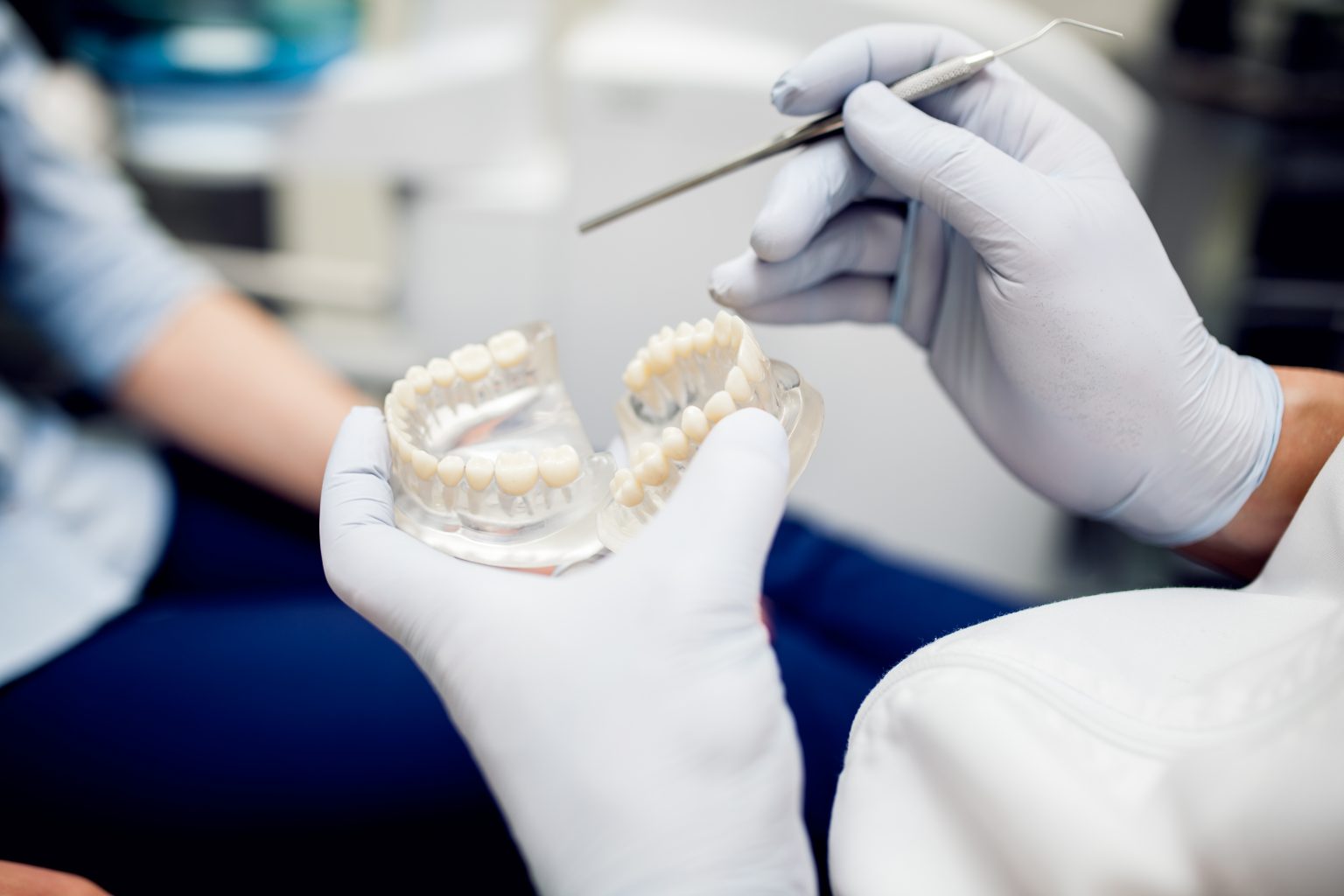
Straighten Your Smile with Brackets and Braces
Are you tired of hiding your crooked smile? Do you yearn for a perfectly aligned set of teeth that will boost your confidence? Look no further! With the help of brackets and braces, you can straighten your smile and achieve the confident smile you’ve always desired.
Brackets and braces are orthodontic appliances that are commonly used to fix dental misalignments. They work by applying gentle pressure to your teeth, gradually shifting them into the desired positions. Over time, this can help correct conditions such as overcrowding, gaps between teeth, and bite issues.
Not only do braces straighten your teeth, but they also improve your overall oral health. By aligning your teeth properly, braces can make it easier to clean your teeth, reducing the risk of tooth decay and gum disease.
With advancements in orthodontic technology, braces have become more comfortable and aesthetically pleasing. You can now choose from a variety of materials, including tooth-colored ceramic brackets or even invisible aligners.
Don’t let misaligned teeth hold you back. Discover the transformative power of Brackets and Braces and unlock your radiant smile. Schedule a consultation with an orthodontist today and take the first step towards a straighter, more confident smile.
Understanding Orthodontics: What are Brackets and Braces
Brackets and braces are orthodontic devices designed to straighten teeth and correct dental misalignments. They are typically made of metal, ceramic, or plastic and are attached to the teeth using dental adhesive.
Brackets are small, square-shaped pieces that are bonded to the front surface of each tooth, while braces are the archwires that connect the brackets and apply pressure to the teeth.
The purpose of brackets and braces is to gradually shift the teeth into their desired positions. This is achieved by applying gentle, continuous pressure to the teeth, which allows the bone surrounding the teeth to reshape and support the new positions.
Orthodontic treatment with brackets and braces can take anywhere from several months to a few years, depending on the severity of the dental misalignment.
Benefits of Straightening Your Smile
Straightening your smile with brackets and braces offers numerous benefits beyond just improving your appearance. Let’s take a look at some of the key advantages of orthodontic treatment:
Improved Oral Health: Misaligned teeth can make it difficult to properly clean your teeth, leading to a higher risk of tooth decay and gum disease. By aligning your teeth, braces make it easier to brush and floss effectively, reducing the likelihood of oral health issues.
Enhanced Confidence: A beautiful smile can significantly boost your self-confidence. When you feel good about your smile, you’re more likely to engage with others, speak confidently, and take on new opportunities without hesitation.
Better Bite Alignment: Brackets and braces can correct bite issues such as overbite, underbite, and crossbite. These bite problems can cause difficulty in eating, speaking, and even lead to jaw pain and headaches. Orthodontic treatment can help align your bite, improving your overall oral function.
Preventing Future Dental Problems: By addressing dental misalignments with brackets and braces, you can prevent future dental problems. Straight teeth are less prone to chipping, cracking, and excessive wear, which can save you from potential dental treatments down the road.
Types of Brackets and Braces
Gone are the days when braces were only available in a single, noticeable metal option. With advancements in orthodontic technology, there are now various types of brackets and braces to suit different preferences and aesthetic concerns. Here are some of the most popular options:
Metal Braces: Traditional metal braces consist of metal brackets and wires. While they are the most noticeable option, they are also the most cost-effective. Metal braces are highly durable and can effectively correct even complex dental misalignments.
Ceramic Braces: Ceramic braces are similar to metal braces but use tooth-colored or clear brackets instead. This makes them less noticeable than traditional metal braces, making them a popular choice among individuals who want a more discreet treatment option.
Lingual Braces: Lingual braces are placed on the back surface of the teeth, making them virtually invisible when you smile. They offer a discreet treatment option for those who are concerned about the appearance of their braces.
Invisible Aligners: Invisible aligners, such as Invisalign, are a popular alternative to traditional braces. These clear, removable trays gradually shift your teeth into place. They are nearly invisible and offer the convenience of being able to remove them for eating and oral hygiene.
How Brackets and Braces Work to Straighten Teeth
Brackets and braces work by applying gentle, constant pressure to the teeth, gradually shifting them into their desired positions. The orthodontist will carefully plan the treatment, taking into consideration the specific dental misalignment and the desired outcome.
During the treatment process, the archwire, which is connected to the brackets, exerts pressure on the teeth. This pressure causes the bone surrounding the teeth to remodel, allowing the teeth to move into their new positions.
The orthodontist will periodically adjust the archwire, ensuring that the teeth continue to shift in the desired direction.
In some cases, elastics or rubber bands may be used in conjunction with brackets and braces to further guide the movement of the teeth. These elastics help correct bite issues and align the jaw properly.
Throughout the treatment, regular visits to the orthodontist are necessary to monitor progress and make any necessary adjustments. These appointments typically occur every 4-6 weeks, depending on the individual treatment plan.
Choosing the Right Orthodontic Treatment for You
When it comes to choosing the right orthodontic treatment for you, it’s essential to consult with an experienced orthodontist. They will evaluate your specific dental needs, discuss your treatment goals, and recommend the most suitable option.
During your consultation, the orthodontist will conduct a comprehensive examination, which may include X-rays, photographs, and impressions of your teeth. This allows them to assess the current state of your teeth and create a personalized treatment plan.
Factors to consider when choosing the right orthodontic treatment include the severity of your dental misalignment, your lifestyle, and your aesthetic preferences. Your orthodontist will provide you with all the necessary information and guide you through the decision-making process.
What to Expect During the Brackets and Braces Treatment Process
Once you’ve decided on the appropriate orthodontic treatment, you can expect the following steps in your brackets and braces treatment process:
Initial Placement: During the first visit, the orthodontist will clean and dry your teeth before applying a bonding agent. The brackets will then be carefully positioned on each tooth before being bonded to the teeth’s front surface. Once the brackets are in place, the orthodontist will thread the archwire through them, securing it with elastic bands or other mechanisms.
Adjustments and Progress Monitoring: You will need to visit your orthodontist regularly for adjustments and progress monitoring. During these appointments, the orthodontist will make any necessary changes to the archwire, elastics, or other components to ensure the teeth continue to move in the desired direction.
Maintaining Oral Hygiene: It’s crucial to maintain excellent oral hygiene throughout your treatment. Your orthodontist will provide you with specific instructions on how to brush and floss effectively around the brackets and wires. Regular brushing and flossing will help prevent plaque buildup and maintain good oral health.
Dietary Considerations: During the brackets and braces treatment, it’s important to be mindful of your diet. Avoid hard, sticky, and chewy foods that could damage the brackets or wires. Opt for softer foods that are easier to chew and won’t jeopardize the progress of your treatment.
Retainers: Once the active treatment phase is complete, you will likely need to wear retainers to maintain the results. Retainers help hold the teeth in their new positions while the bone and tissues stabilize. Your orthodontist will provide specific instructions on how often to wear your retainers.
Maintaining Oral Hygiene with Brackets and Braces
Maintaining proper oral hygiene is crucial when undergoing orthodontic treatment with brackets and braces. The brackets and wires can create additional spaces for food particles and plaque to accumulate, increasing the risk of tooth decay and gum disease.
Here are some essential tips for maintaining oral hygiene with brackets and braces:
Brush Regularly: Brush your teeth at least twice a day, using a soft-bristled toothbrush and fluoride toothpaste. Pay extra attention to brushing around the brackets and wires, angling the toothbrush to clean both above and below them. Consider using an interdental brush or a water flosser to access hard-to-reach areas.
Floss Daily: Flossing is equally important, even with brackets and braces. Use a floss threader or specialized orthodontic floss to navigate between the wires and under the archwire. Take your time and be thorough to remove any trapped food particles and plaque.
Rinse with Mouthwash: Rinse your mouth with an antimicrobial mouthwash to help kill bacteria and freshen your breath. Look for a mouthwash that is alcohol-free and recommended for orthodontic patients.
Attend Regular Dental Check-ups: Regular dental check-ups are essential during your brackets and braces treatment. Your dentist will assess your oral health, clean your teeth, and monitor any potential issues. They can also provide additional tips and recommendations for maintaining oral hygiene.
Dealing with Discomfort and Adjusting to Brackets and Braces
It’s common to experience some discomfort or soreness during the initial stages of wearing brackets and braces.
This discomfort usually subsides within a few days as your mouth adjusts to the appliances. However, there are some steps you can take to manage any discomfort:
Over-the-Counter Pain Relievers: Over-the-counter pain relievers such as ibuprofen can help alleviate any discomfort or soreness. Follow the instructions on the packaging and consult your orthodontist if you have any concerns.
Orthodontic Wax: If the brackets or wires are causing irritation or rubbing against your cheeks or gums, your orthodontist can provide you with orthodontic wax. Simply apply a small amount of wax to the problematic area to create a barrier between the braces and your soft tissues.
Eating Softer Foods: During the initial stages of wearing brackets and braces, it may be helpful to stick to softer foods that require less chewing. This can minimize any discomfort and make the adjustment period more manageable.
Saltwater Rinse: If you experience any mouth sores or irritations, rinsing your mouth with a saltwater solution can help soothe the affected areas. Mix a teaspoon of salt with eight ounces of warm water and swish it around your mouth for 30 seconds before spitting it out.
Tips for a Successful Brackets and Braces Treatment
To ensure a successful brackets and braces treatment, consider the following tips:
Follow Your Orthodontist’s Instructions: It’s important to follow your orthodontist’s instructions carefully. This includes attending all scheduled appointments, adhering to the recommended oral hygiene routine, and following any dietary restrictions.
Be Patient: Orthodontic treatment takes time, and results may not be immediate. Be patient and trust the process. Remember that the end result will be a beautiful, straight smile that is worth the wait.
Protect Your Braces: Take precautions to protect your braces. Avoid activities that could lead to mouth injuries, such as playing contact sports without a mouthguard. If you do sustain an injury, contact your orthodontist immediately.
Communicate with Your Orthodontist: If you experience any issues or concerns during your treatment, don’t hesitate to reach out to your orthodontist. They are there to support you and address any questions or problems that may arise.
Conclusion: Achieving a Beautiful, Straight Smile
Don’t let misaligned teeth hold you back. Discover the transformative power of brackets and braces and unlock your radiant smile.
Schedule a consultation with an orthodontist today and take the first step towards a straighter, more confident smile.
Orthodontic treatment with brackets and braces offers numerous benefits, including improved oral health, enhanced confidence, better bite alignment, and prevention of future dental problems. With various types of brackets and braces available, you can choose an option that suits your aesthetic preferences and lifestyle.
Throughout your brackets and braces treatment, proper oral hygiene is crucial. Regular brushing, flossing, and dental check-ups will help maintain your oral health and ensure the success of your treatment.
Remember to be patient and follow your orthodontist’s instructions for a successful outcome. Soon enough, you’ll be able to enjoy the rewards of a beautiful, straight smile that will boost your confidence and leave a lasting impression.
Contact us now to book your appointment Garland: +1 972-882-9357, Plano: +1 469-7154-958 and experience the Shifa Dental Clinic difference.



